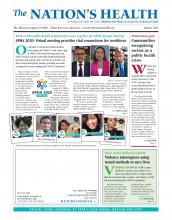Since May, nearly 7 million Americans have fallen into poverty, pushing the nation’s overall poverty rate to more than 11%, according to a recent study.
The research — part of a larger effort to provide near real-time poverty estimates during the pandemic — found that while initial federal relief funds reduced poverty in the early months of COVID-19, their expiration is now pushing millions below the poverty line. More specifically, researchers found that poverty in the U.S. has risen nearly 2 percentage points since spring, from 9.4% in the period from April to June to 11.3% for September and October.
The recent poverty increase was most pronounced among children, people with a high school education or less and Black Americans, who experienced the sharpest poverty rise.
In the absence of additional federal aid or improvements in the labor market, it is likely the U.S. will end 2020 with a higher poverty rate than at the beginning of the year, said study co-author James Sullivan, PhD, professor of economics and co-founder of the Wilson Sheehan Lab for Economic Opportunities at the University of Notre Dame.
“I’m really worried that families already struggling to make ends meet will now have to struggle all the more,” Sullivan told The Nation’s Health. “And given the surge in coronavirus cases, it’s unlikely (relief) will come from the labor market in the short run. The best thing you can do for the economy is to get the pandemic under control.”
The November study — published by researchers with Notre Dame, the University of Chicago and Zhejiang University in China — is part of ongoing work to monitor U.S. poverty changes during the pandemic. Typically, Sullivan noted, the U.S. Census Bureau releases new poverty rates each fall for the previous calendar year. However, with the pandemic inducing the biggest one-month employment decline on record, followed by an unprecedented federal relief package in the form of the CARES Act, tracking real-time poverty impacts became much more critical, he said.
As of November, Sullivan and his colleagues had released three reports with real-time poverty updates. They plan to continue the work throughout the pandemic. The poverty estimates are based on data from monthly census surveys that query tens of thousands of U.S. households about unemployment and income — the same questions and data officials use to calculate annual poverty rates, Sullivan noted.
“It wasn’t until the pandemic that there really was an urgent need to have poverty information on a more real-time basis,” he said.
Poverty actually fell in the early months of the pandemic, the researchers found, decreasing from nearly 11% in January and February to 9.4% in April, May and June. During that time period, poverty declined across population groups and regions, with some of the most noticeable decreases among people with low educational attainment and people who fall into neither white nor Black racial categories.
One-time enhancements to unemployment benefits, in the federal CARES Act, buffered the pandemic’s economic impact in spring, driving down overall poverty. But those gains have since disappeared. The $600 weekly addition to unemployment benefits to qualifying individuals ended July 31, and expanded unemployment benefits ended Dec. 31.
The study researchers also noted that poverty is increasing despite lower unemployment in parts of the country.
“This disconnect between poverty and unemployment is not surprising given that some government benefits have expired, unemployment insurance benefits are typically only about half of pre-job loss earnings, and 4 million people have left the labor force in the past year and therefore are not counted as unemployed,” the researchers wrote.
Going forward, Sullivan said real-time poverty data should be used to make sure additional federal assistance gets to those who need it most.
“As we debate additional relief, we should be thinking about targeting those hit hardest by the pandemic,” he said.
For more information on the study, visit http://povertymeasurement.org/covid-19-poverty-dashboard.
- Copyright The Nation’s Health, American Public Health Association









